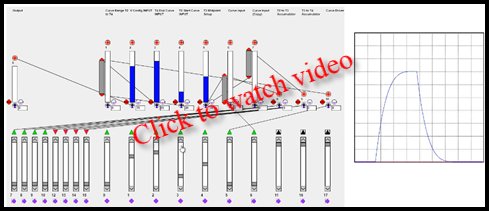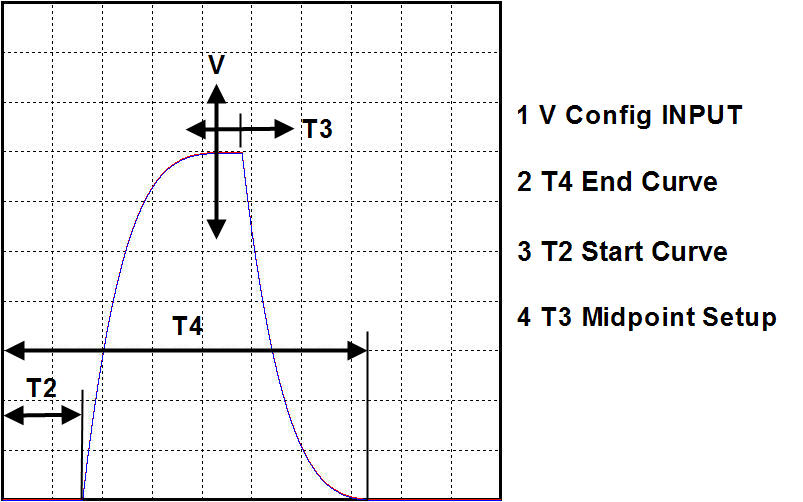

This shows one of the canned "dynamic" curves that is provided with the KEEL Toolkit. In this case we allow external configuration signals to control the shape of the curve: the amplitude of the curve (Input 1, "V"), the starting point of the curve (Input 3, "T2"), the ending point of the curve (Input 2, "T4"), and the midpoint of the curve (Input 4, "T3").
Input 0 provides the input signal.
The rendering of the KEEL "dynamic graphical language" that describes the formula for the curve is shown above. In this case, the KEEL Toolkit was used to create the formula. The autogenerated source code was packaged for rendering and to animate the graph. As you manipulate the inputs above, the KEEL "Engine" is called. If you manipulate one of the configuration inputs (Inputs 1 - 4), the entire graph is redrawn by stepping the input (Input 0) from 0 to 100 and drawing lines between output values. While we are incrementing the configuration inputs to create the graph (one integer increment at a time), the KEEL Engine processes floating point inputs. This means that any floating point inputs are explicitly processed. There is no "interpolation" used to determine real outputs.

This is a simple curve. It could easily be enhanced to allow the shape of the concave and concave surfaces to be adjusted.
|
Copyright , Compsim LLC, All rights reserved |